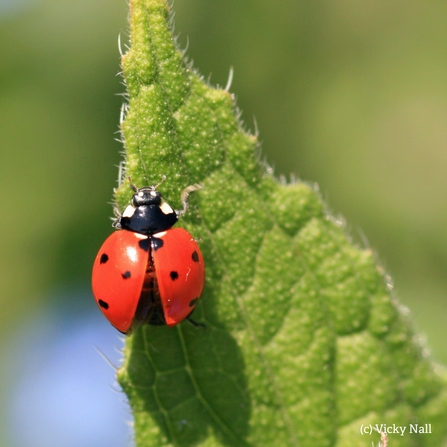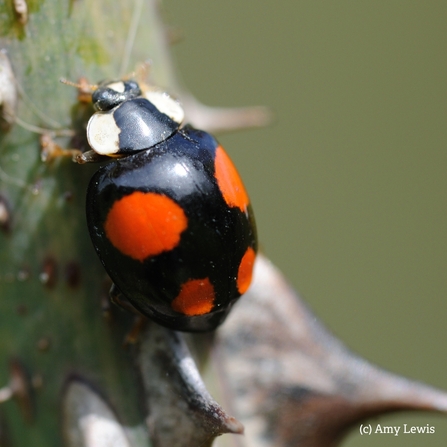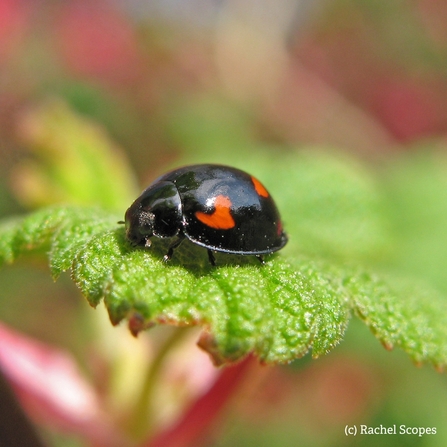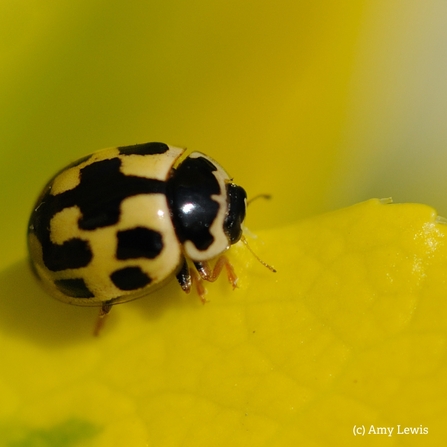The variety of beetles in the UK is staggering – around 4,000 different species! They do lots of important jobs, from shifting dung to pollinating plants. Some are fast and agile hunters, others trundle along at their own pace. They can be black or brightly coloured, plain or patterned. Find a love for beetles and there will always be something new to discover.
Ladybirds are probably our most familiar beetles – and also some of the most popular. They’re known as the gardener’s friend, as many hunt the aphids that occasionally feed on our prized plants. The classic image of a ladybird is the 7-spot, with seven black spots dotted across its bright red back. But there are around 47 species of ladybird in the UK, with a variety of different colours and patterns.
The ladybird lifecycle
As with butterflies, ladybirds have a four-stage lifecycle: egg, larva, pupa, adult.
The adults lay eggs, which hatch into young known as larvae. The larvae feed and grow in stages, casting off their exoskeleton to grow a larger one each time. These stages are known as ‘instars’ and there are four of them.
When the larvae are fully grown, they become pupae. They attach themselves to a leaf or other surface and turn into a hardened case – these often just look like a patterned blob. Within this case, they transform into adult beetles.
When the beetles first emerge from their pupae, they lack the familiar colours and patterns. It can take a few days for these colours to appear. These adult ladybirds will usually appear late in summer and spend the winter tucked away in crevices, ready to emerge again in spring.
Anatomy of a ladybird
To identify ladybirds, it helps to know a little about their structure. Studying the patterns on the three main parts of their body can help reveal which species you’re looking at. The first part is the head, which is pretty obvious. The second part is the pronotum, which is the broad section directly behind the head. The third part is the wing cases (known as elytra), which cover the bulk of a ladybird’s back.
Lots of ladybirds
Of the 47 or so ladybirds that live in the UK, only around 26 are considered ‘conspicuous ladybirds’. These are the large, colourful ladybirds that can often be spotted on plants. The other species are smaller, harder to find and harder to identify. Here are seven conspicuous ladybirds to look out for!
7-spot ladybird
The classic ladybird, found in parks and gardens across the UK. It’s a large ladybird, usually 5-8mm long. It has red wing cases, with three black spots on each side and a seventh spot in the middle, just behind the pronotum. Look for it on low-growing plants.







